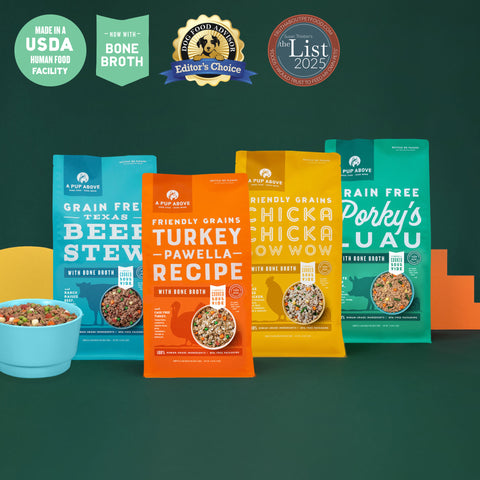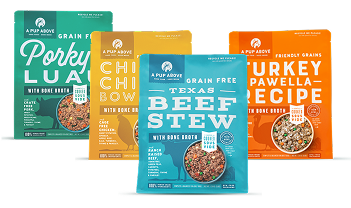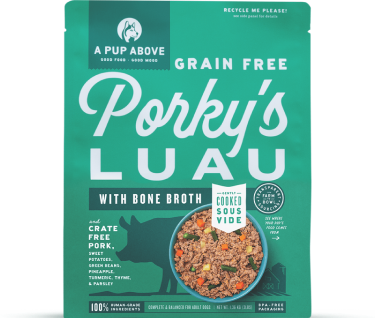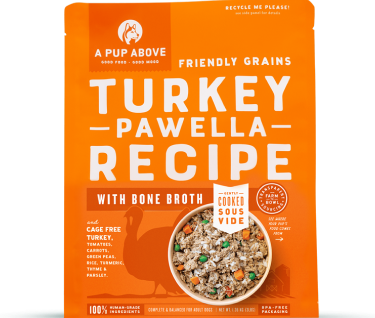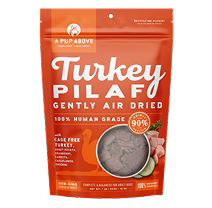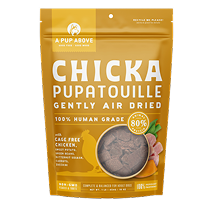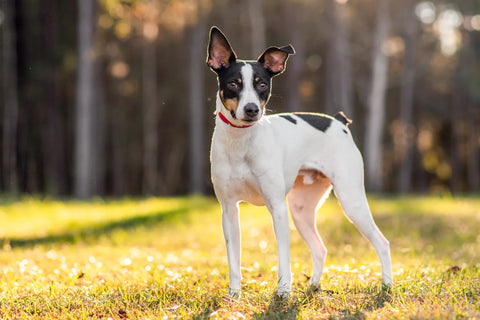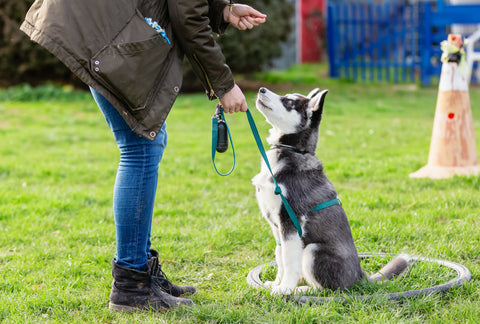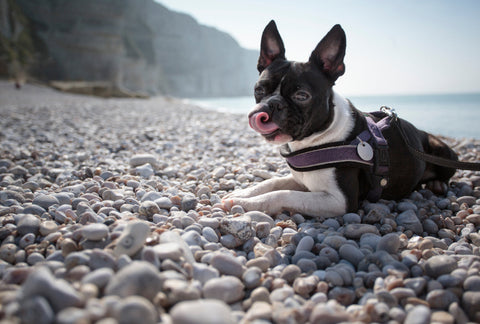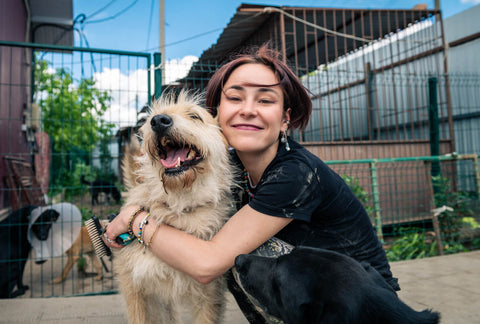
Havanese: The Ultimate Quick Guide
Meet the Havanese — a little dog with a big personality! Known for their playful spirit and affectionate nature, Havanese dogs are like sunbeams on four legs.
These charming furballs, hailing from Cuba, are not just another pretty face in the dog world. They're Cuba's national treasure, a living link to the island's colorful history.
At A Pup Above, we're smitten with the Havanese's blend of charisma and cuddliness, making them a hit in any household. So, let's embark on a delightful journey into the world of the Havanese and find out what makes these pups so irresistibly special.
Where Does the Havanese Originate From?
Cuba's very own, the Havanese has a story as vibrant as the streets of Havana. These little dogs trace their roots back to the days when Spanish settlers brought their small companions to the island. Over generations, these pups adapted to the Cuban lifestyle, becoming the fluffy, friendly Havanese we adore today.
Their history is as rich as Cuban culture itself, surviving through the ups and downs of the island's past, including the dramatic era of the Cuban Revolution. It was during this time that the Havanese breed almost faced extinction, but thanks to the efforts of a few dedicated breeders, these pups made a spectacular comeback.
Now, they're not just Cuba's pride, but beloved family dogs all around the world. The Havanese's journey from Cuban aristocracy to global fame is nothing short of remarkable — a true underdog story!
What Are Havanese Dogs Known For?
Havanese dogs, with their expressive eyes and silky coats, are a bundle of joy wrapped in fur. These little charmers are famed for their stunning coat, which can come in a variety of colors from sable to jet black, making each one uniquely beautiful.
Standing as a proud member of the small dog club, they have a compact size that's perfect for cuddles and fits comfortably in your lap. But it's not just their looks that win hearts — Havanese are renowned for their affectionate and gentle demeanor, making them ideal family dogs.
They thrive on human companionship, often forming strong bonds with their owners. This loving nature extends beyond the home, as many Havanese excel as therapy dogs, offering comfort with their calming presence. Their adaptability and eagerness to please also make them great dogs for first-time pet owners.
What Are the Key Characteristics of the Havanese Breed?
Continuing our journey with the Havanese, these small dogs from Cuba are more than just lapdogs — they're a bundle of personality, intelligence, and adaptability, making them an excellent choice for families and individuals alike.
Here's a closer look at their defining characteristics:
Intelligence and Trainability
The Havanese is not only a companion dog but also a quick learner, showcasing high trainability and intelligence. Their eagerness to please, combined with a positive reinforcement approach, makes them excel in obedience training right from puppyhood.
This trait also lends them to be fantastic therapy dogs, as they can be trained to provide comfort and support.
Grooming Needs and Coat Characteristics
Their silky coat, ranging from sable to jet black, is a hallmark of the breed. However, this beautiful coat comes with specific grooming needs.
The Havanese does not have an undercoat, which makes them a hypoallergenic choice, but their hair can easily mat and tangle without regular grooming. Daily brushing and routine upkeep are essential to keep their coat healthy.
Health and Lifespan
As a healthy breed, the Havanese has a lifespan of about 14 to 16 years. However, they are prone to certain health issues like hip dysplasia, patellar luxation, and deafness. Regular veterinary check-ups can help in early detection and management of such conditions.
Exercise Needs and Activity Level
Despite being a small breed, Havanese dogs have a significant energy level and require regular exercise to stay happy and healthy. Daily walks, playtime, and engagement in dog sports can meet their exercise needs, preventing the onset of behaviors linked to separation anxiety.
Temperament and Social Traits
Known for their gentle nature, the Havanese makes an excellent family dog. They are social, affectionate, and bond closely with their owners, which can sometimes lead to separation anxiety if left alone for long periods. Their friendly demeanor extends to children and other pets, making them a harmonious addition to any home.
Physical Attributes
These toy dogs, part of the Bichon family, are small yet sturdy with a playful and energetic gait. Their size makes them ideal for both apartment living and houses with yards.
Tips for a Happy and Healthy Havanese
Caring for a Havanese puppy or adult dog involves more than just love and cuddles. Here are some tips to ensure your Havanese leads a happy, healthy life
Balanced Diet for Your Havanese
Feeding your Havanese the right kind of food is essential for their well-being. A balanced diet with high-quality dog food supports their health and vitality. At A Pup Above, we offer tasty options like Turkey Pilaf and Chicka Chicka Bow Wow, packed with nutrients and flavors that your Havanese will love.
These meals are crafted to cater to the dietary needs of small breeds, ensuring your pup gets all the necessary nourishment they need to thrive.
Tailored Exercise and Playtime Routines
While Havanese dogs are energetic and playful, their exercise needs differ from larger breeds. Tailoring their activity to include daily walks and playtime sessions that match their energy level is important.
Remember, Havanese enjoy engaging activities that stimulate both their mind and body. Interactive toys, dog sports, and even agility training can provide the mental stimulation and physical exercise they crave, preventing boredom and promoting overall well-being.
Regular Vet Check-ups and Preventive Care
Due to their predisposition to certain health issues like hip dysplasia, patellar luxation, and occasional deafness, it's crucial to maintain regular veterinary check-ups. These visits not only help in early detection of potential health problems but also offer a chance for preventive care.
Keeping up with vaccinations, flea and tick prevention, and routine dental cleanings are essential aspects of maintaining your Havanese's health.
Proper Grooming and Skin Care
The Havanese's beautiful, silky coat requires regular grooming to prevent matting and tangles. Setting a grooming routine that includes brushing their coat several times a week, along with regular baths, will keep their fur in top condition.
Pay attention to their skin as well; Havanese can be prone to issues like tear staining. Gentle cleaning around their eyes and monitoring for any signs of skin irritation will help keep them comfortable and looking their best.
Havanese Feeding Chart
Transitioning from a balanced diet to perfecting mealtime specifics, let's dive into feeding your Havanese effectively. How much should they eat, what should they eat, and when do their dietary needs change as they grow? Here’s a breakdown tailored just for your Havanese's unique requirements.
Havanese Feeding Chart By Life Stage:
Puppies (Up to 1 Year)
- What To Feed: High-quality puppy food is important, supporting growth with the right balance of nutrients, including essential fatty acids for a healthy coat and brain development.
- Amount & Schedule: Feed your Havanese puppy small portions of kibble or wet food, about ¼ to ½ cup, three to four times a day.
- Treat Idea: Small bits of green beans are great for training treats — nutritious and safe. Learn more about healthy treats in our “What Vegetables Are Good for Dogs?" guide.
Adults (1-7 Years)
- What To Feed: Transition to adult dog food, focusing on high-quality proteins to maintain energy levels and muscle health. Consider a mix of dry food and wet food to keep their diet interesting.
- Amount & Schedule: Generally, ½ to ¾ cup of food per day, split between two meals, is adequate. Refer to our guide, “Switching Dog Food Safely: Tips and Tricks" for changing food types without digestive upset.
- Treat Idea: Occasional treats like small pieces of carrot or apple can supplement their diet with natural fibers and vitamins.
Seniors (7+ Years)
- What To Feed: Senior dog food that’s lower in calories but still rich in nutrients to support joint health and manage weight. Supplements like glucosamine can be beneficial.
- Amount & Schedule: Reduce portions slightly to prevent obesity, usually around ½ cup per day, depending on their activity level and body condition.
- Treat Idea: Soft, easy-to-chew treats are ideal for older dogs. Ensure they are low in fat and high in fiber.
A Final Word
As we wrap up our journey with the Havanese, it's clear these small but mighty dogs are more than just a pet — they're a heartwarming addition to any family. At A Pup Above, we understand the importance of supporting their vibrant spirit and health. That's why we offer nourishing, human-grade meals, designed for the unique needs of breeds like the Havanese.
Whether strolling through a park or snuggling at home, these little charmers are a testament to the joy and companionship dogs bring into our lives.
Sources:
Havanese History | The Havanese Club of America
Havanese Dog Breed Information | American Kennel Club (AKC)
Hypoallergenic Dogs | American Kennel Club
Separation Anxiety in Dogs: Causes, Prevention, and How to Solve It | AKC
Top Stories

Why Do Dogs Lick Their Paws?

Why Do Dogs Whimper & Make Noises in Their Sleep?
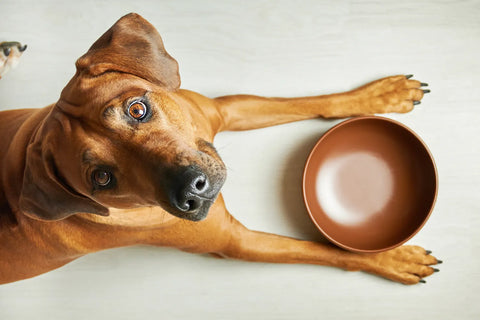
Healthy Vet-Approved Homemade Dog Food Recipes
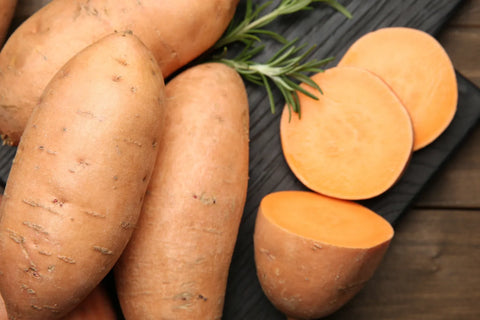
How To Cook Sweet Potatoes for Dogs
